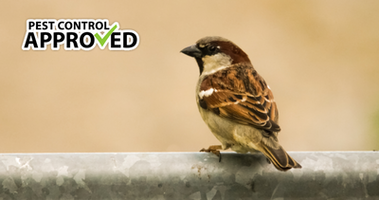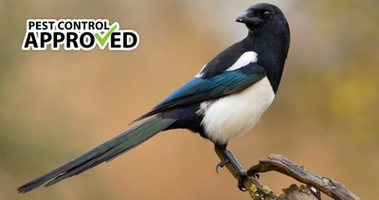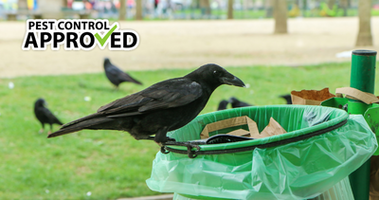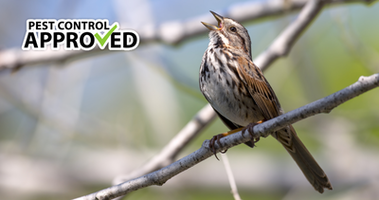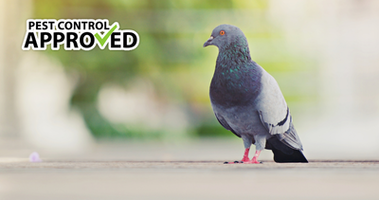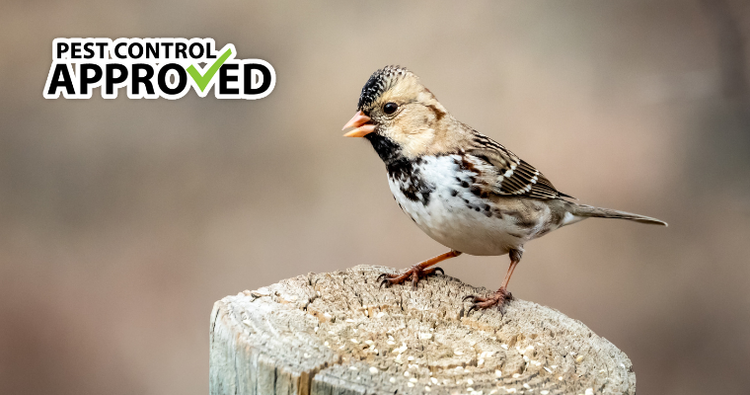
Harris Sparrow
The Harris sparrow is native to North America. It lives in the Canadian Tundra but migrates through the prairies to the Southern Greater Plains in the USA in Winter. It is generally seen at bird feeders in the winter months. Harris sparrows are some of the least studied birds due to their isolated territory.
NAME: Zonotrichia querula
LOCATION: Canada
HABITAT: Tundra
DIET: Omnivore
SIZE: 17 to 20 cm
PREDATORS: Arctic ground squirrel, stoats, Jays, Shrikes
LIFE EXPECTANCY: Unknown
Size
Harris sparrows are one of the largest species of sparrow. They are 17 to 20 cm long with a 27 cm wingspan. They weigh between 26 and 49 grams. They are larger than the song sparrow but smaller than the Eastern Towhee.
Appearance
Harris sparrows are large, chunky birds. They have barrel shaped bodies and small round heads. They have a long tail and pink cone-shaped beak. Unlike most birds, the males and females have similar coloration. They are streaky brown and black with a black bib, face, and crown. The bib and face have patchy black feathers that turns fully black as they age. Their belly is white.
Diet
Harris sparrows mainly eat grains foraged on the ground. They frequently eat ragweed and knotweed. They also consume commercial birdseed, particularly enjoying sunflower seeds, millet, and cracked corn. To prepare for breeding, sparrows consume more berries. Early in breeding season, they eat small berries such as bearberries and insects such as flies and beetles. These berries and insect provide the nutrients needed for successful breeding.
Habitat
Harris sparrows are native to Northern Canada. They reside in the tundra of the northern territories. The tundra is an open area mixed with sparse pine, spruce, and other coniferous trees. It mainly consists of low growing vegetation. Temperatures can reach 30°C (86°F) in summer, although average temperatures are closer to 10°C (50°F). In winter, the sparrows migrate to the American plains. They frequent fields, brush, and hedgerows. Generally, they avoid the prairie climates except while migrating south.
Reproduction
Harris sparrows breed in the Canadian tundra. They arrive in the tundra between May and June. The female builds a nest over two to three days with moss, twigs, and brush before finding a mate. After a successful mating, the female lays 3 to 5 eggs. These eggs are 1.8 to 2.5 long and 1.5 to 1.8 cm wide. They are pale green with irregular spots. The eggs are incubated for 12 to 14 days before hatching. The young mature quickly, leaving the nest after only 10 days. Because of their unique breeding ground, Harris sparrows only produce one brood per year.
Predators
Harris sparrows face different predators than most sparrows. Although domestic animals are a threat, sparrow’s migratory patterns and northern habitat prevent them from being frequent prey of domestic animals. Instead, their biggest predators are ones who attack their nests. These nests are low to the ground and easily accessible by arctic ground squirrels and stoats. Adult sparrows are preyed on by jays, shrikes, and merlins. These birds may also attack juveniles or eggs.
Lifespan
The oldest Harris sparrow ever recorded was 11 years old. Harris sparrow nests are easy targets for predators, and, like other sparrows, they have a high mortality rate in their first year of life. Most species of sparrow usually live 2 to 3 years in the wild. However, the lifespan of Harris sparrows is unknown.


